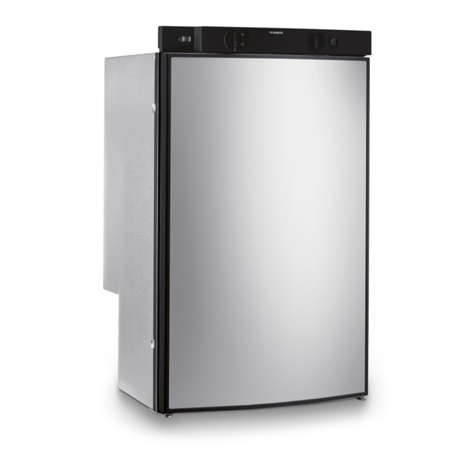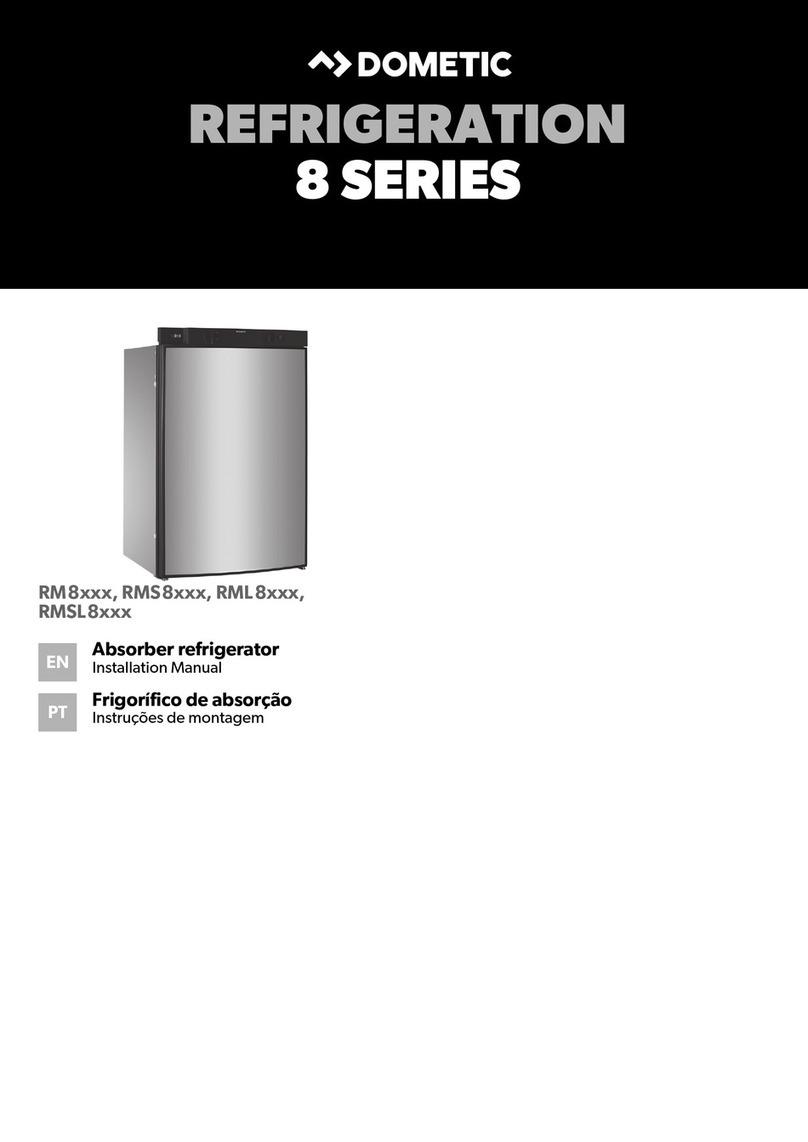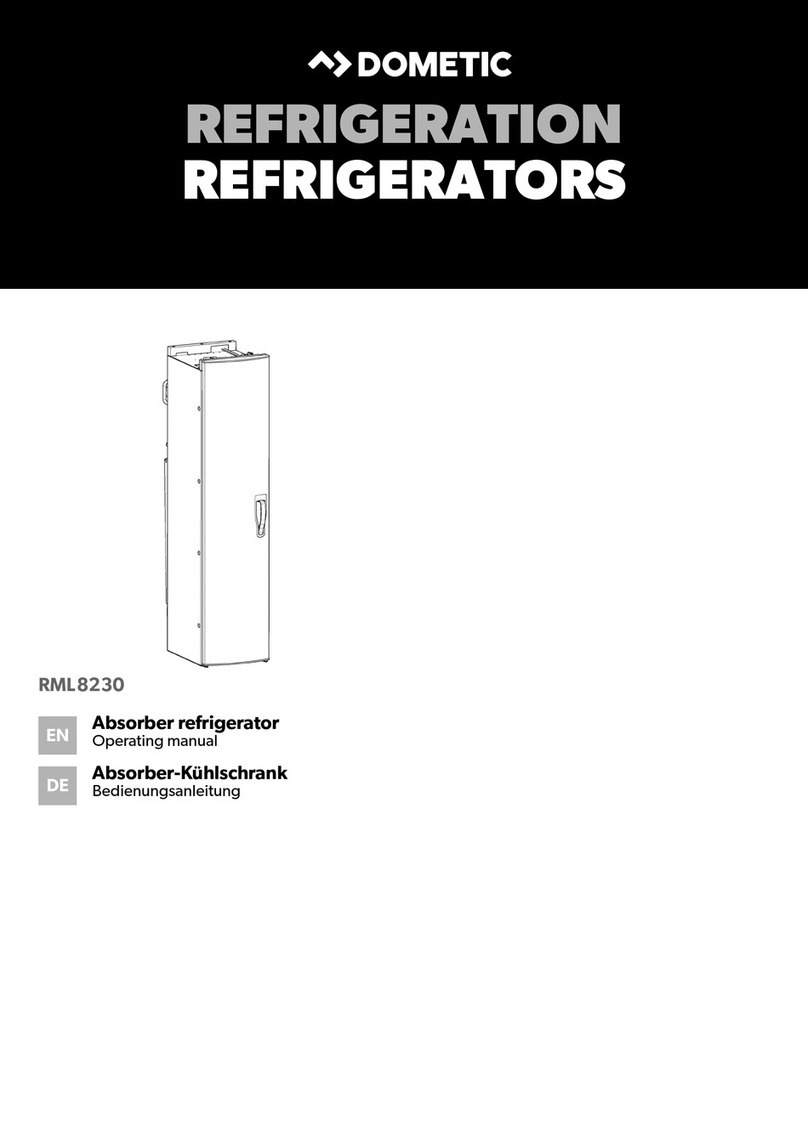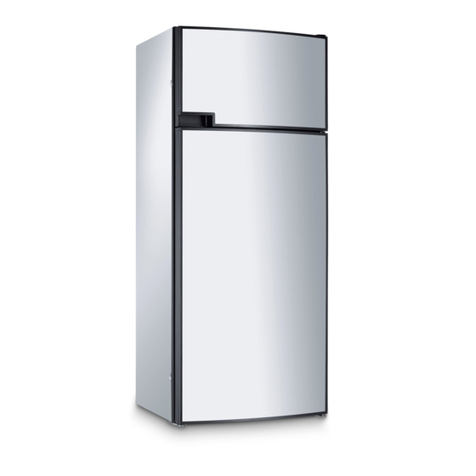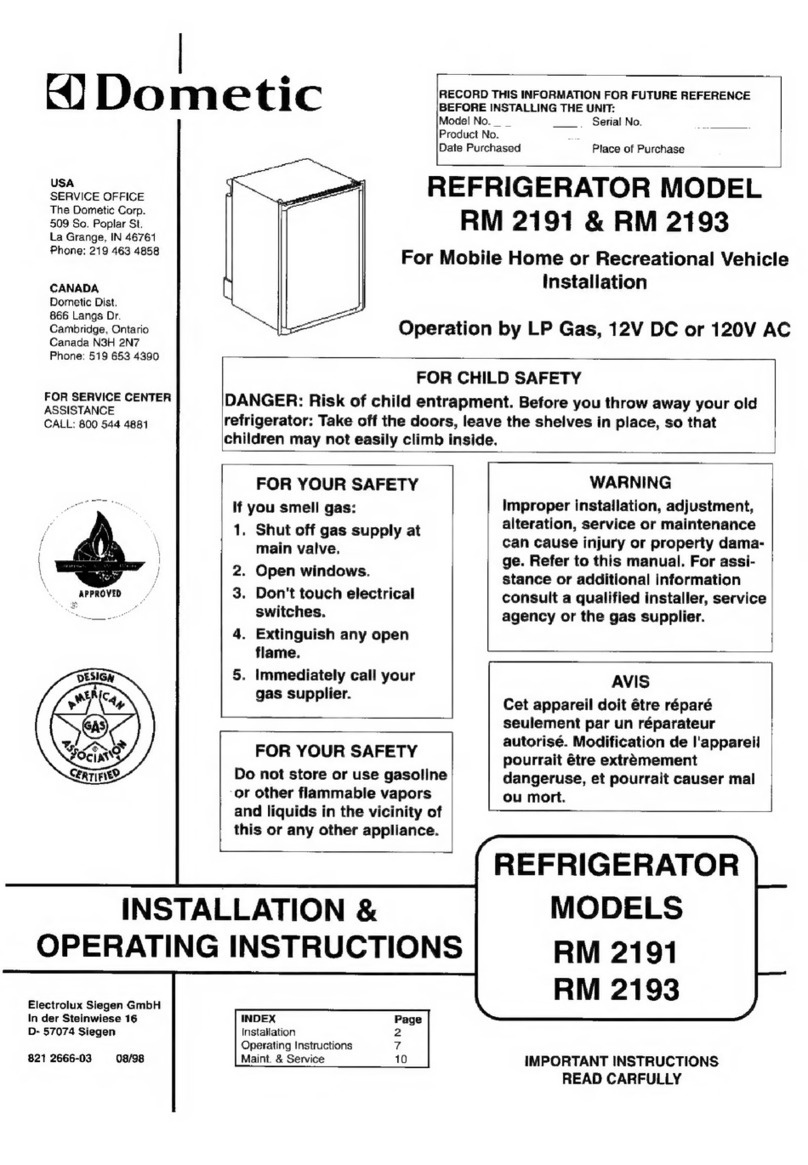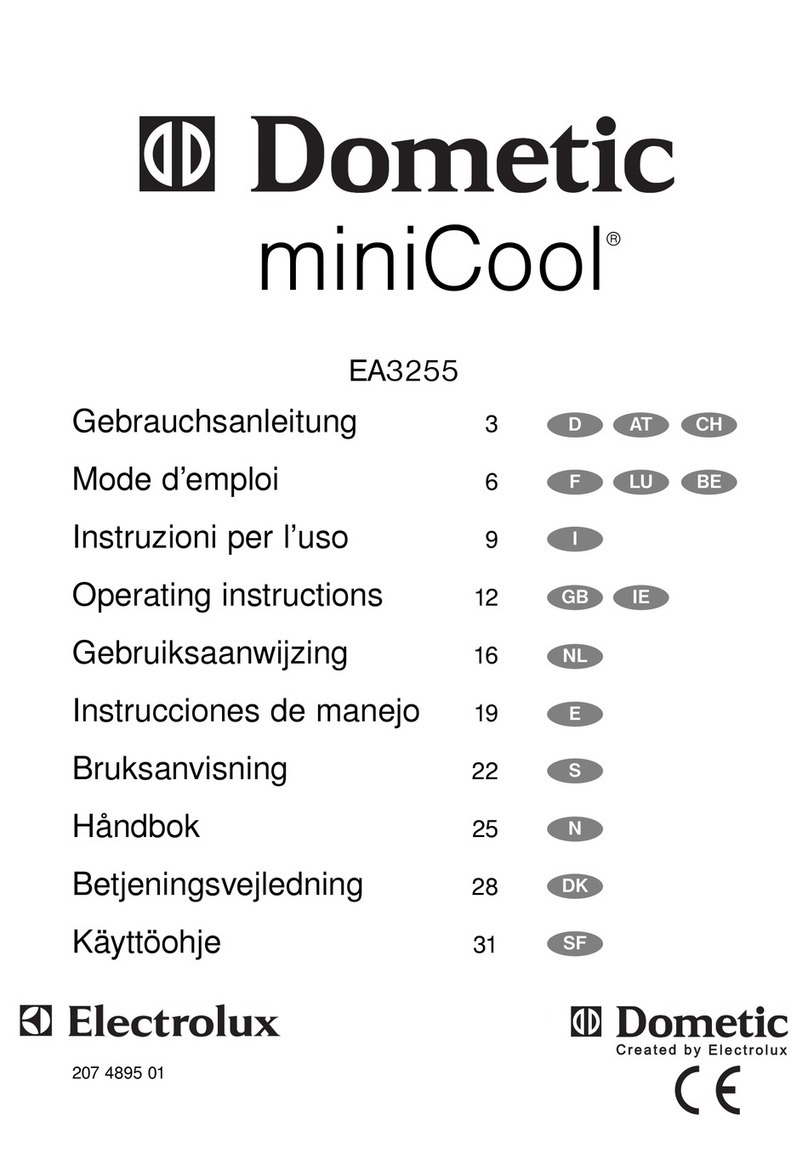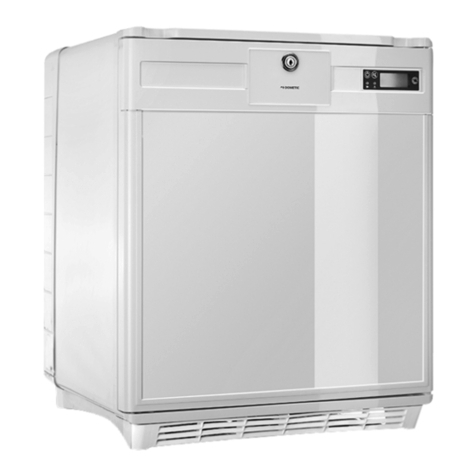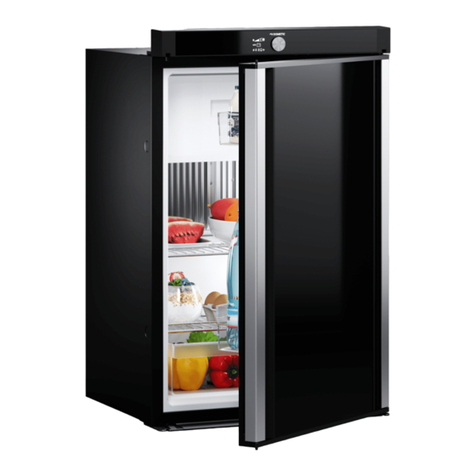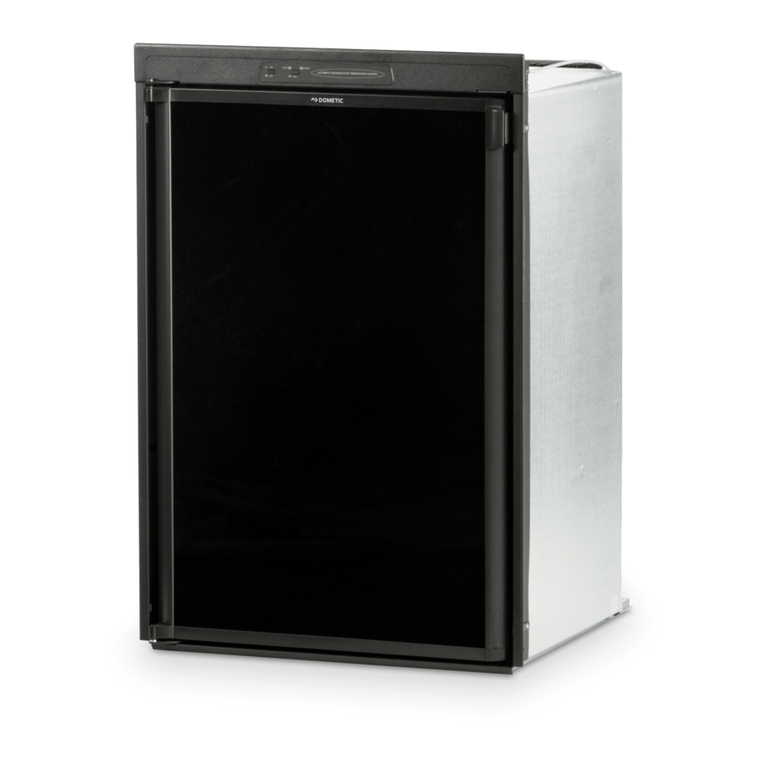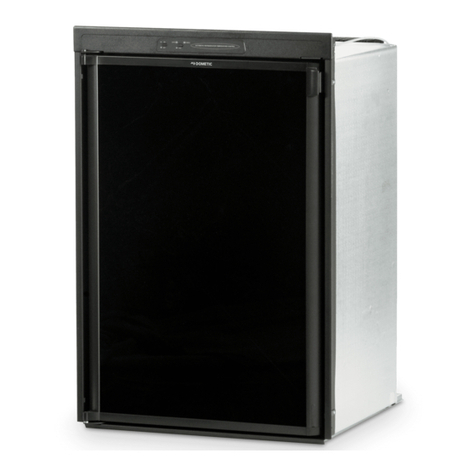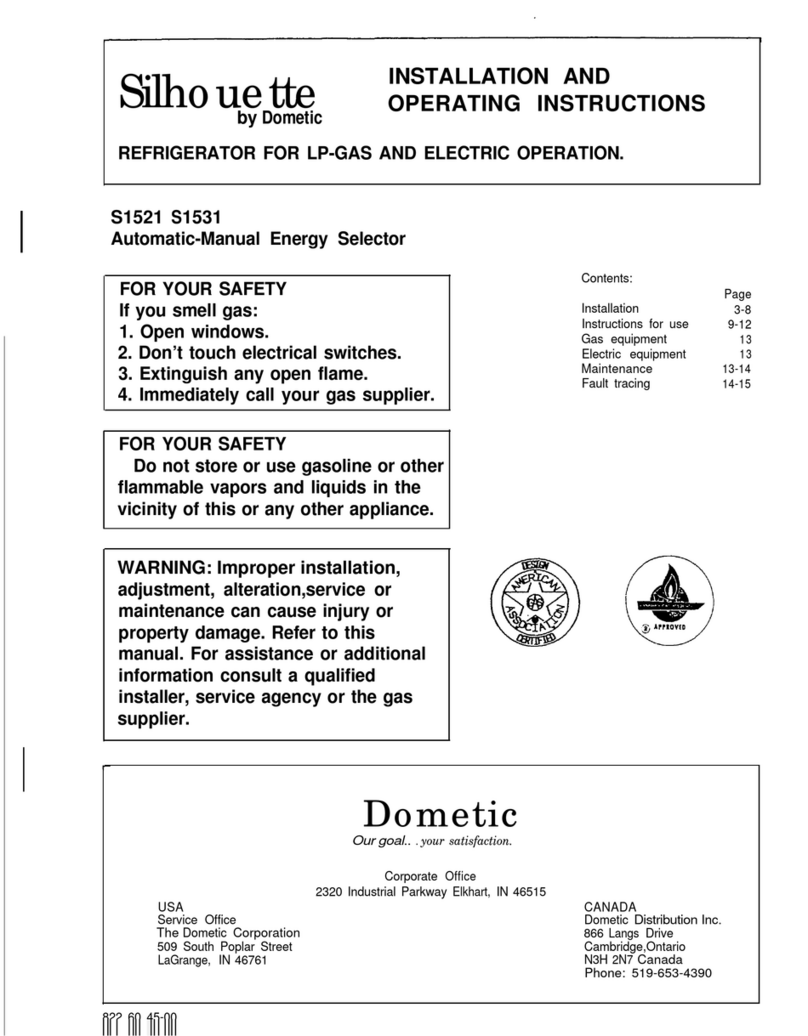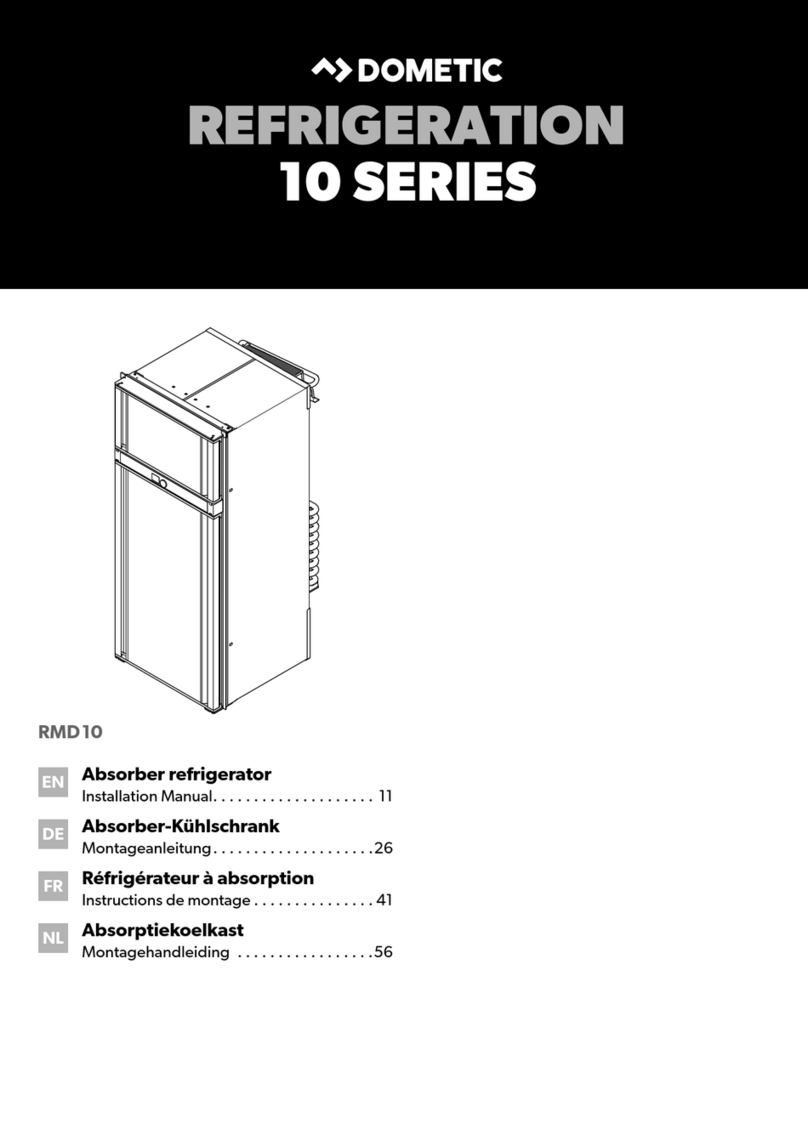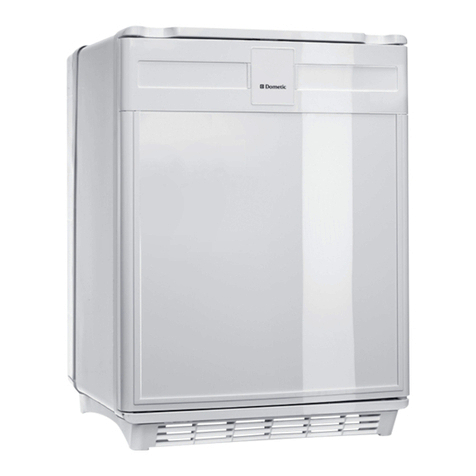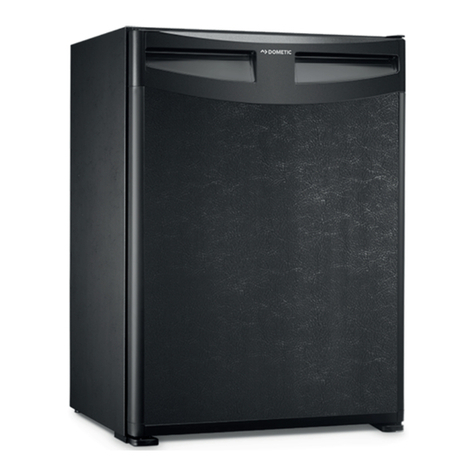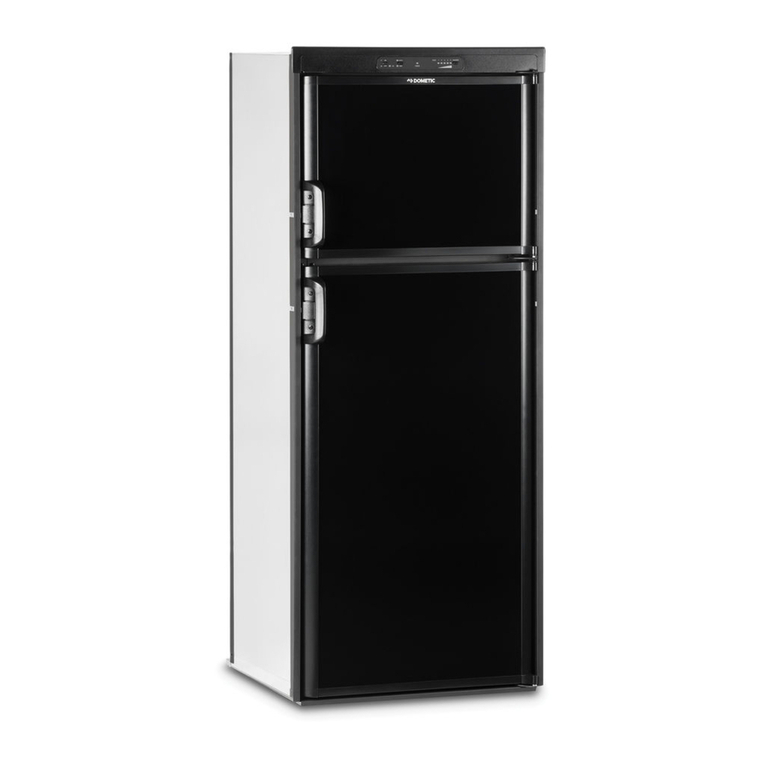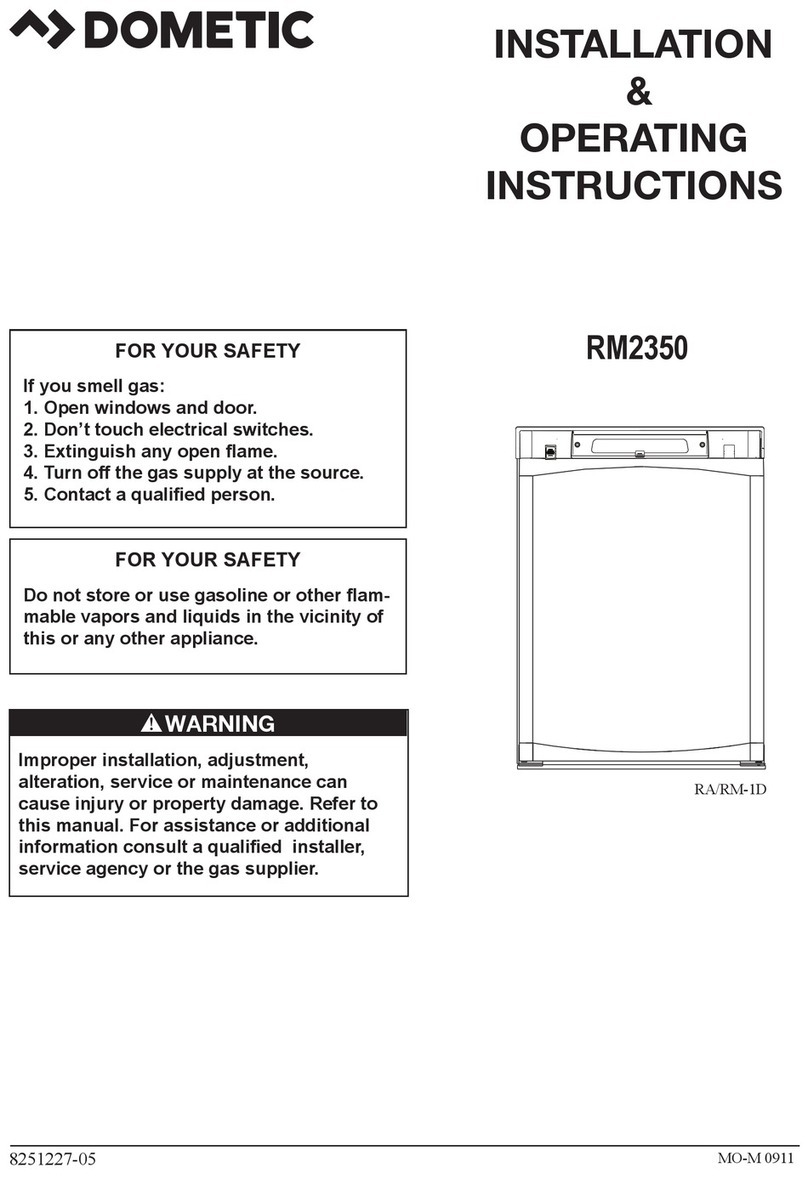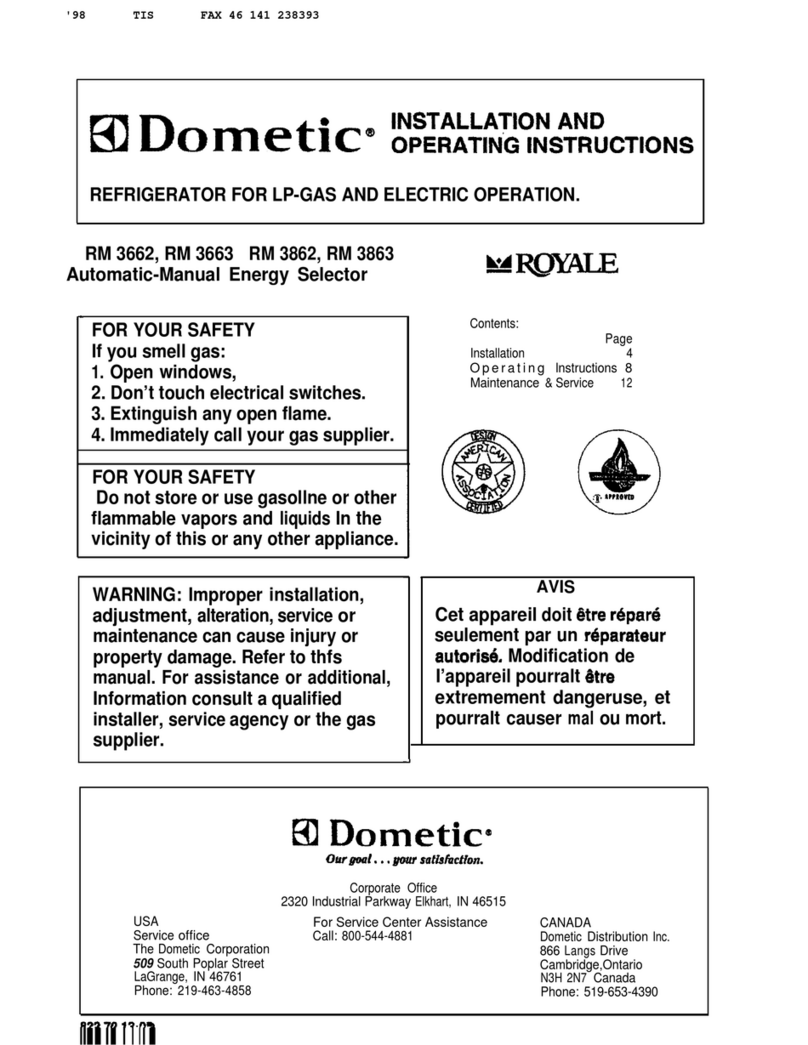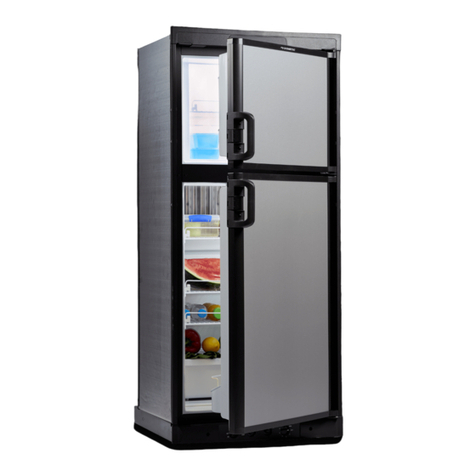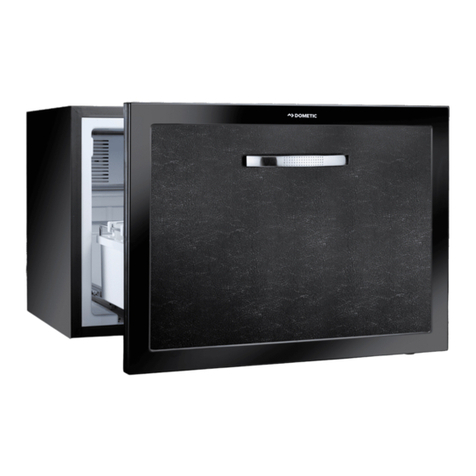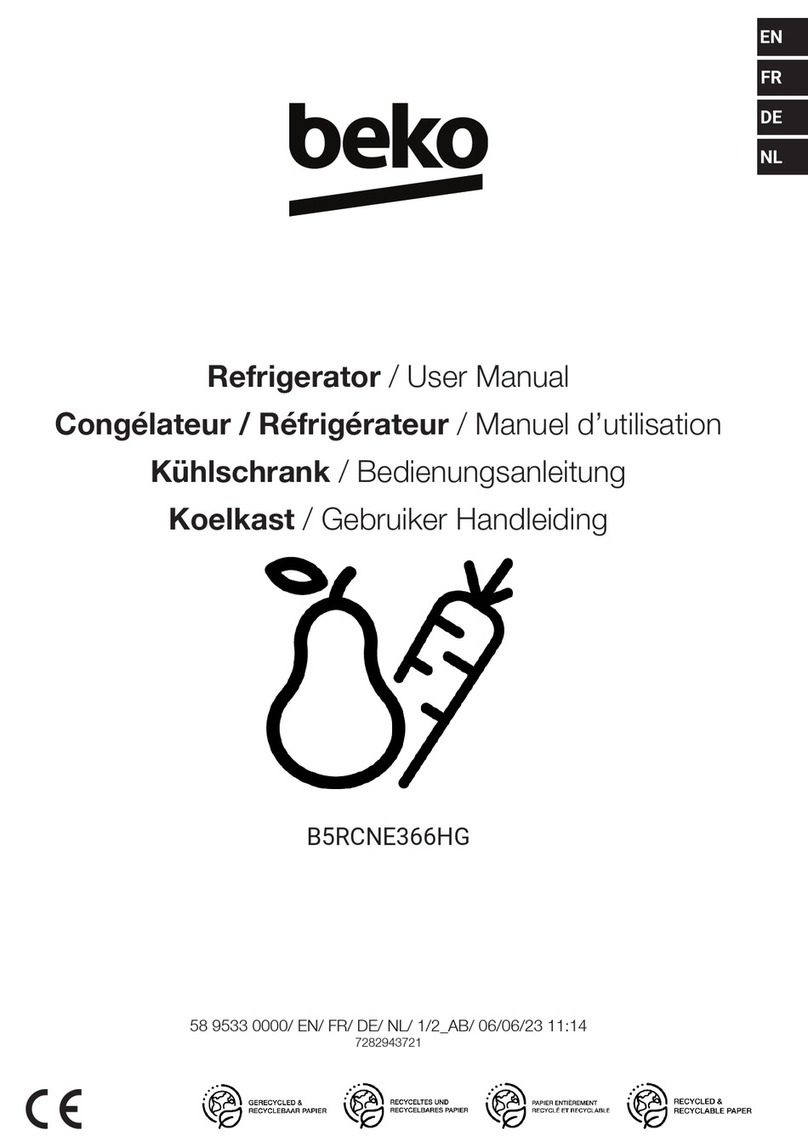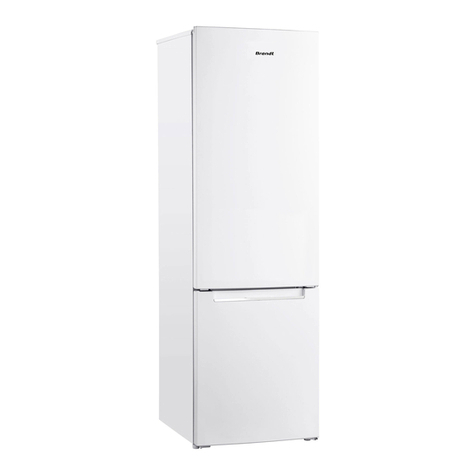6
8. Liquid gas operation
Do not use any additional form of energy (mains/battery). The unit must not be
connected to town or natural gas pipelines. It is only suitable for use with
propane/butane gas (e.g. alor Gas, amping Gaz, aravangas, etc).
The refrigerator is equipped for a specific gas-pressure, corresponding to the
standard pressure of the country in which it is sold. The rating-plate states the
pressure which is correct. It is important that a non adjustable pressure-
regulator is used to reduce the pressure in the gas cylinder to the operating
pressure specified on the rating-plate, no other pressure may be used.
eedle valve operated gas control taps are OT suitable for use with this
appliance and must not be used as a substitute for a pressure regulator.
9. Connection of gas supply
Always connect in the following sequence:
GAS BOTTLE →→PRESSURE-REGULATOR →→APPLIA CE.
The gas bottle must only be used in an upright position and particular care must
be taken every time the appliance is connected to the gas bottle to ensure that
there are no leaks, that the gas pipe (rubber hose) is not under tension or
kinked, and that it is not in contact with hot surfaces.
The connection pipe and gas bottle should always be located in positions where
they will not be tripped over or otherwise inadvertently disturbed.
Before attempting to light the burner, every time after connection, turn on the
gas at the bottle and check the gas connections for leaks by applying a soap
and water solution over them and watching for bubbles, which would indicate a
leak.
For your safety
Do not check for leaks with a naked flame!
Do not smoke while checking for leaks!
10. Gas equipment system (Fig. 1)
The gas equipment consists of a multiple value (B) [value with built-in
thermoelectric ignition control], the piezo-gas lighter (E), a burner with sparking
plug and the gasthermostat.
Knob (B) can be turned to 2 function positions:
:large flame = gas-flow open;
:out position = gas supply to burner is closed.
If, for any reason the gas flame extinguishes, the ignition control is working
automatically and shuts off gas supply.
